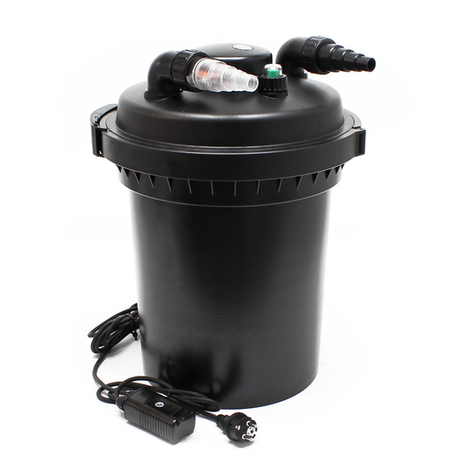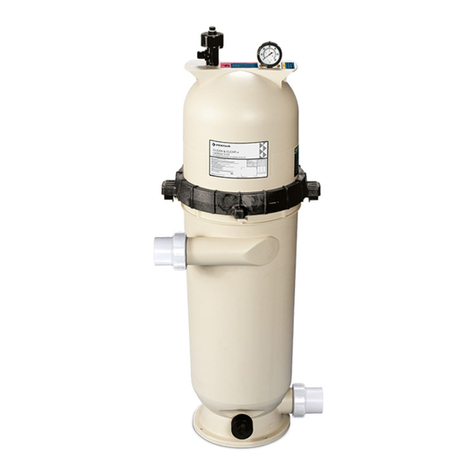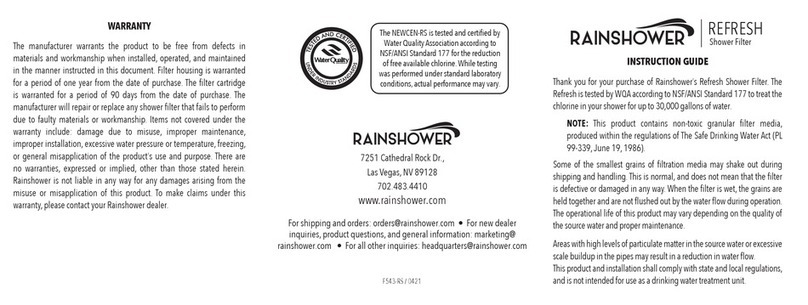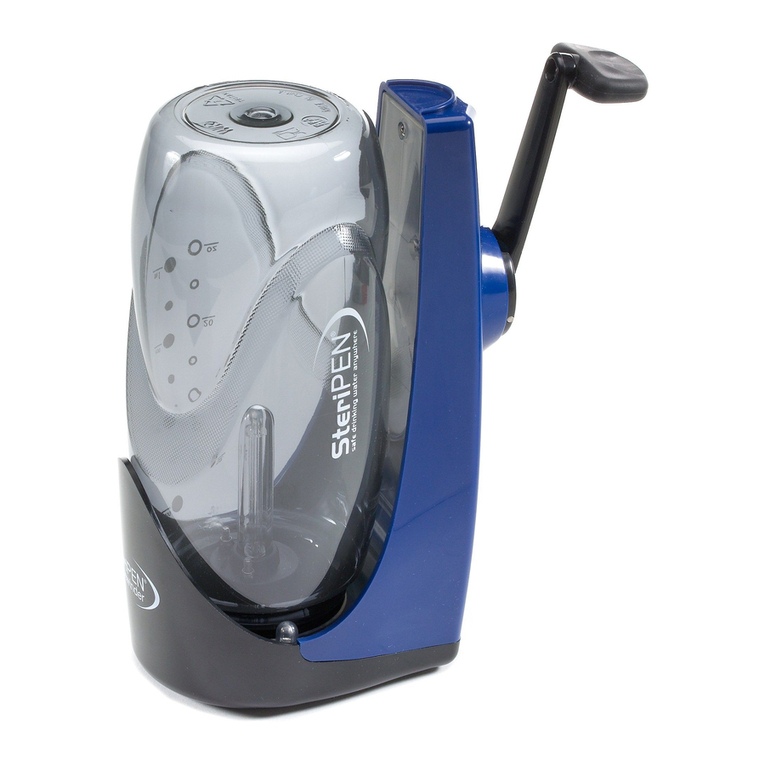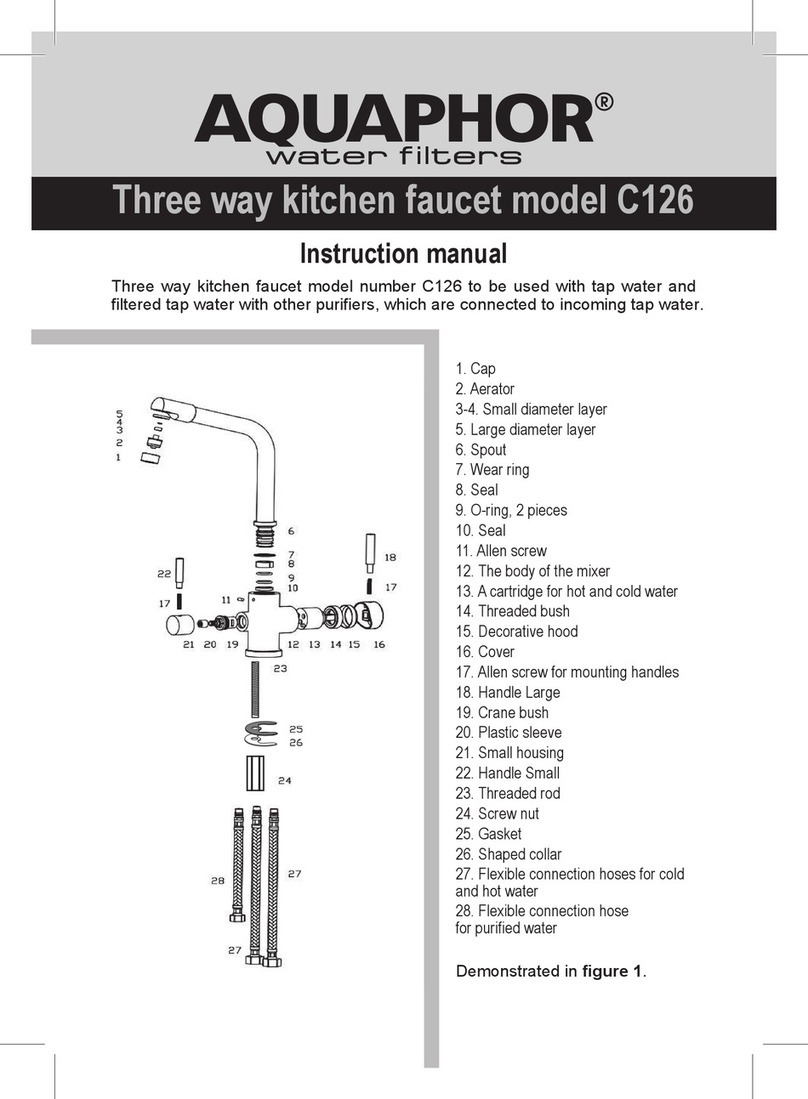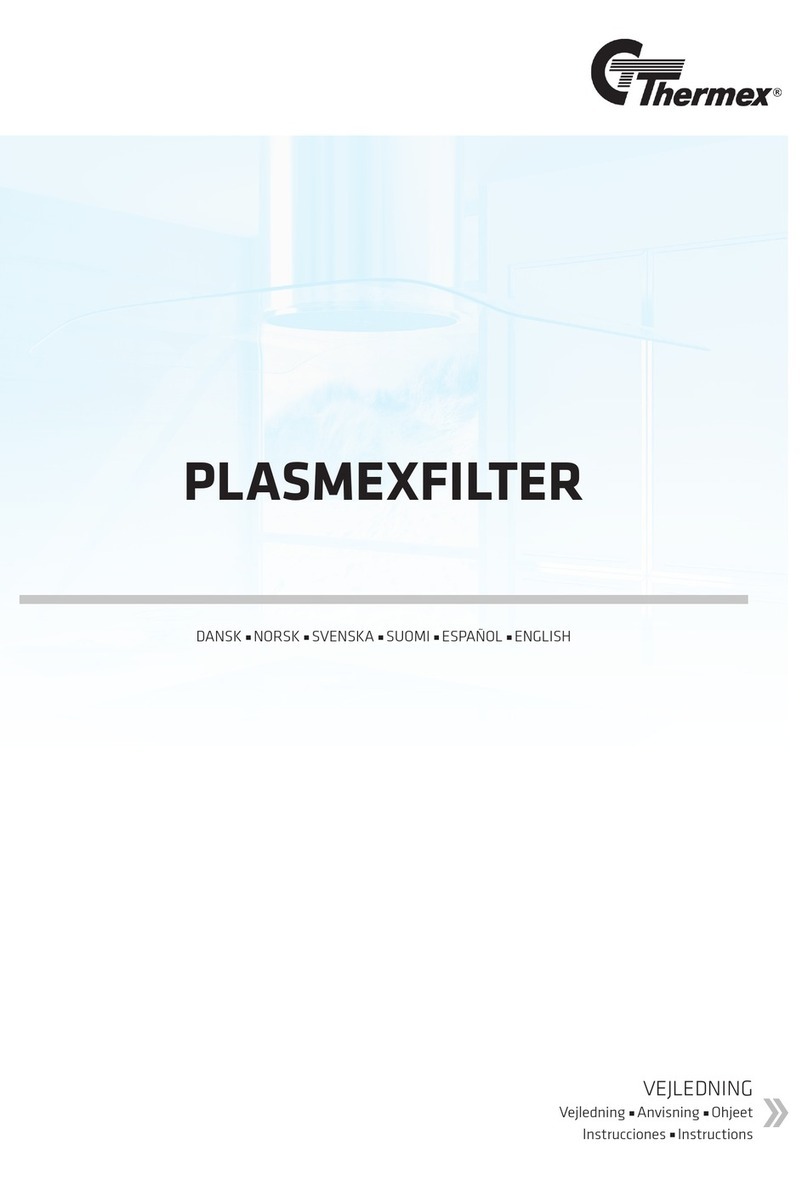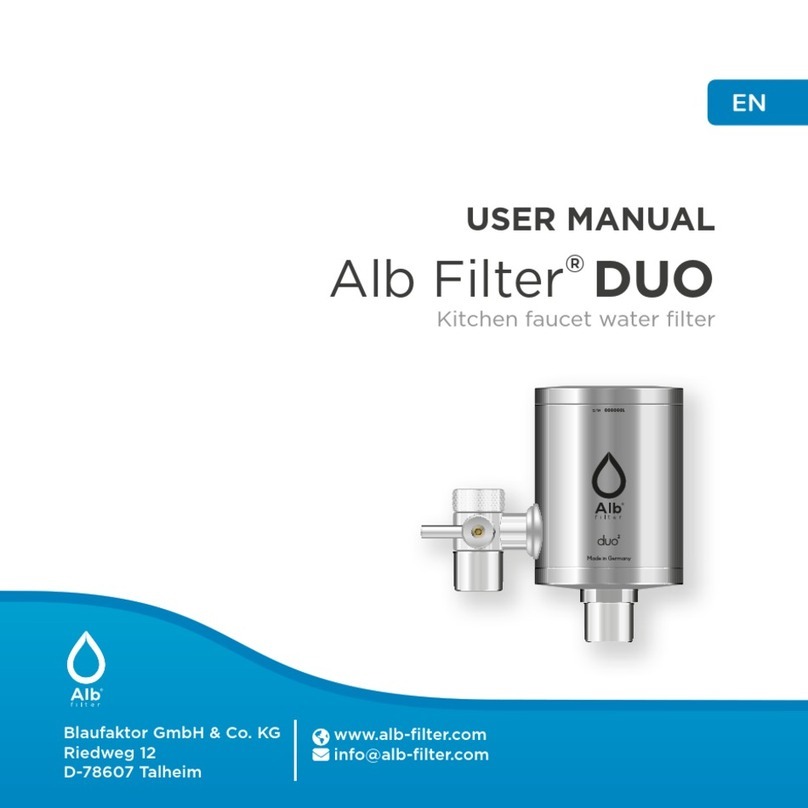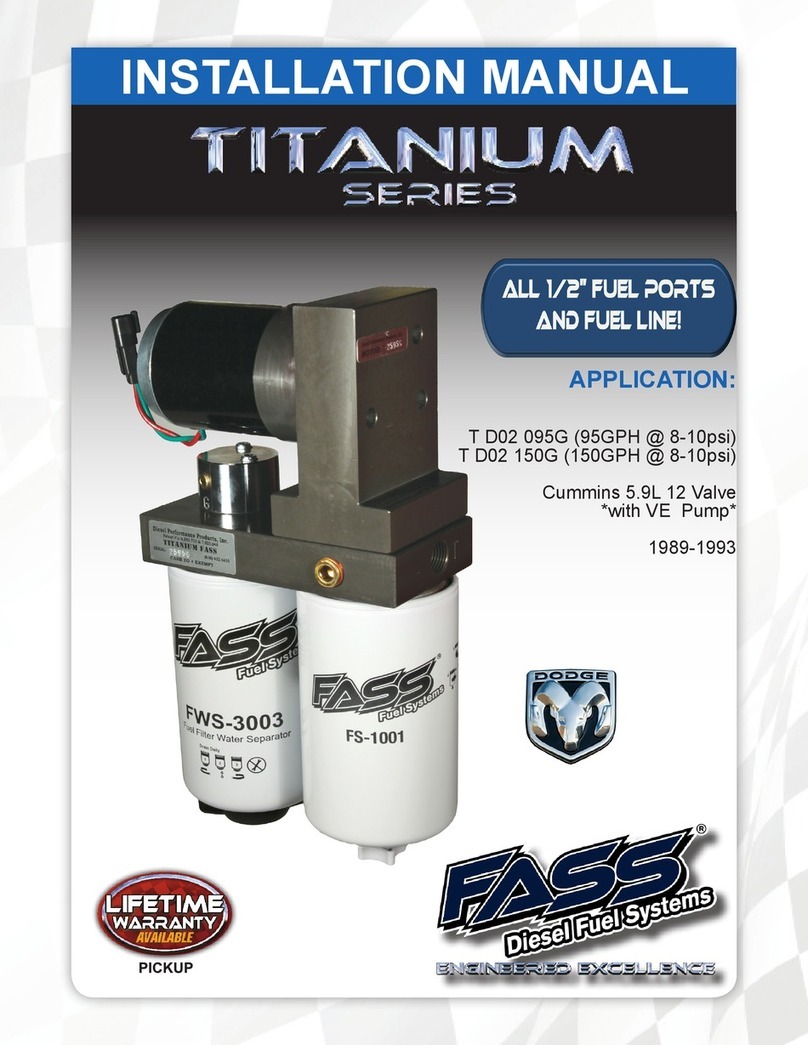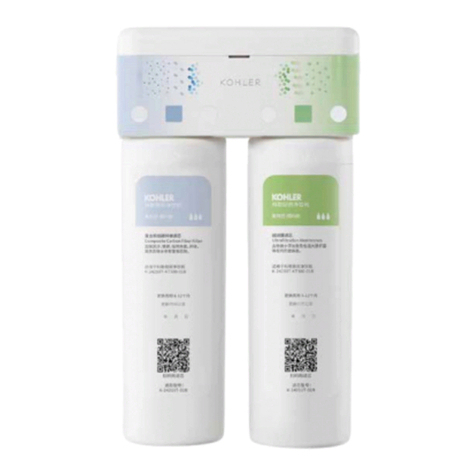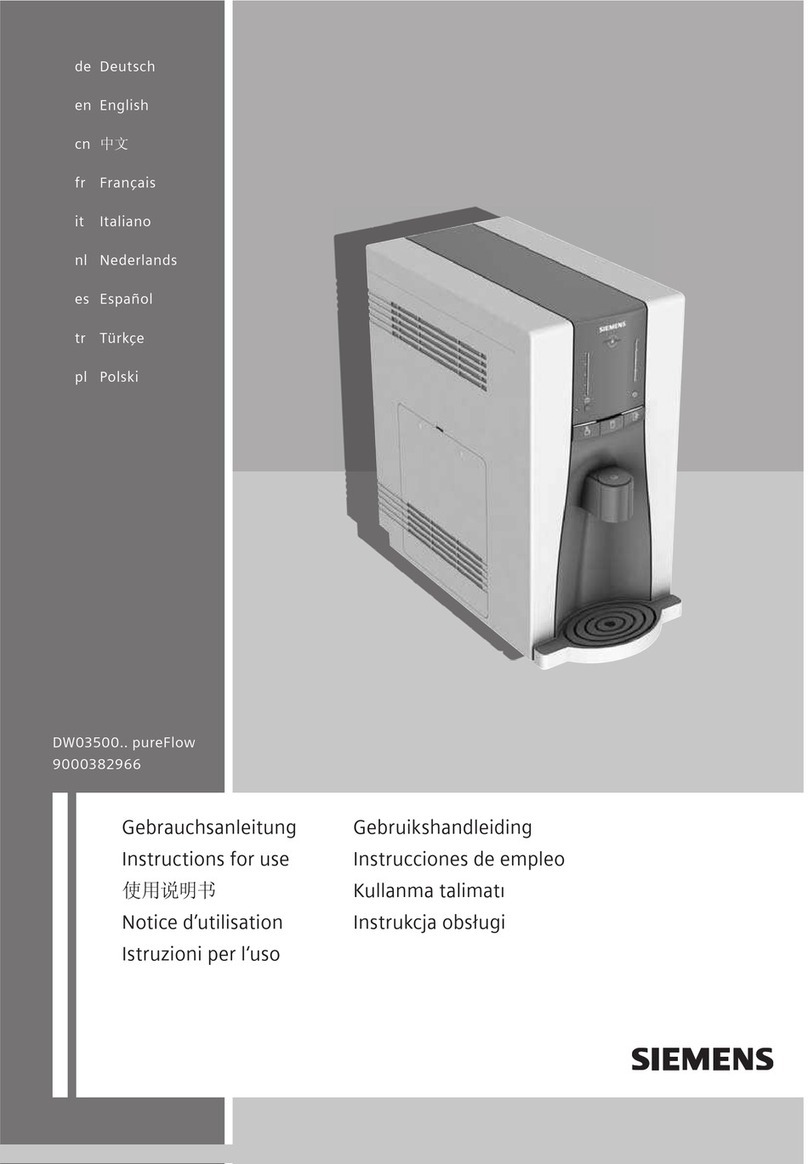WaterStep M-100 User manual

INSTRUCTION MANUAL
625 Myrtle St. Louisville, KY 40208 USA 001.502.568.6342 waterstep.org
WaterStep
M-100
Chlorine
Generator
Read these
instructions in order
to safely and effectively
use this product.

CONTENTS
Important Safeguards ...................................................................................... 1
Warnings........................................................................................................ 2
What the Chlorine Generator Does ..................................................................... 3
What is Included with the Chlorine Generator ................................................... 4-5
What Else is Needed ........................................................................................ 6
Installing the Chlorine Generator .................................................................... 6-7
Operating the Chlorine Generator ................................................................. 8-10
Shutting Down the Chlorine Generator ............................................................. 11
What to do with By-products........................................................................... 12
IMPORTANT SAFEGUARDS
1
WaterStep M-100 Chlorine Generator
When using the water chlorinator, basic
safety precautions should always be
followed:
1. Read all instructions.
2. Only allow responsible adults, who are
familiar with the instructions, to operate
the chlorine generator.
3. The chlorine generator produces by-
products of liquid chlorine and sodium
hydroxide. Use caution when draining
the unit of these by-products. Rinse
any spills immediately.
4. Store these by-products in bottles that
are not used for drinking. Using a
permanent marker, clearly mark the
bottles “Chlorine” and “Sodium
Hydroxide,” respectively. Also write,
in large words, “POISON - DO NOT
DRINK.” These by-products can be
harmful or fatal if swallowed.
5. The side of the chlorine generator
labeled CHLORINE produces chlorine
gas when the unit is operated as
instructed. Do not open the ll tube
and breathe the fumes.
6. When draining and rinsing the chlorine
generator, be careful not to spill
chlorine or sodium hydroxide on your
skin or clothes, or splash it in your
eyes. It is recommended you wear
eye protection.
7. To protect against shock, never place
tools on/near the 12-volt battery.
8. Do not leave the chlorine generator
running unattended.
9. Avoid over-chlorinating the water
by testing chlorine level frequently
as instructed in this manual. If the
water is over-chlorinated, add water
to dilute the chlorine to 5 PPM (parts
per million).
10. Do not operate below the minimum
ll line to avoid damaging the unit!
11. SEE WARNINGS ON PAGE 2.

THIS MACHINE GENERATES CHLORINE GAS TO PURIFY
WATER. IT DOES SO SAFELY WHEN USED AS INTENDED
BY PEOPLE WITH PROPER TRAINING. BUT IT CAN BE
DANGEROUS IF YOU DO NOT USE IT CORRECTLY.
The WaterStep M-100 CHLORINE GENERATOR uses
salt (sodium chloride, or NaCl) and direct current (DC)
electricity to produce chlorine gas (Cl2) and sodium
hydroxide (NaOH). You should use this machine only
after you get proper training on how to run it and
monitor chlorine levels.
Chlorine destroys disease-causing organisms in water and
is the most commonly used disinfectant in all regions of the world. It does not kill
all viruses, bacteria or protozoa.
Chlorine does NOT remove salt from salt water. It does NOT remove toxic chemicals.
So water treated with this machine could still contain harmful chemicals.
When possible, you should get your source water tested by a certied lab to see what
it has in it.
The M-100 can chlorinate water up to a level of 5 parts per million, but no third party
or government agency has tested this machine for how effectively it kills bacteria or
other microbes or viruses. Use this machine and the water it produces at your own risk.
DANGER: This device produces chlorine gas (Cl2) and sodium hydroxide (NaOH).
Chlorine gas is poisonous – which is why it kills
bacteria and other microbes. But it is also poisonous
to humans and animals. If you breathe it in, it can
burn your lungs. It can also burn your eyes and
your skin.
Sodium hydroxide (NaOH) can cause severe skin
irritation and burns.
Use this machine in a well-ventilated area. Do not breathe in gas from any ports or
tubes. Handle the liquid chlorine and sodium hydroxide it produces very carefully, and
put them only in bottles with large, clear labels.
2
WaterStep M-100 Chlorine Generator
DANGER
POISON
GAS
DANGER
TOXIC
MATERIALS

WHAT THE CHLORINE GENERATOR DOES
The WaterStep M-100 Chlorine Generator was developed in response to a need that
affects nearly 1 billion people around the globe . . . unsafe drinking water. In fact,
waterborne disease claims more lives each day than armed conict, HIV/AIDS, and
cancer combined.
For more than 140 years, chlorine has been added to water to kill disease-causing
bacteria and pathogens. The WaterStep M-100 Chlorine Generator is designed as a
portable, affordable way to chlorinate water for the purpose of eliminating waterborne
pathogens.
Through the process of electrolysis, the M-100 Chlorine Generator creates chlorine gas
from salt water. The chlorine gas, which evenly disburses throughout the water, kills
the waterborne bacteria in 2 hours.
As contaminated water circulates through the system, chlorine gas is injected into the
water. When the water has reached the recommended chlorine level - 5 PPM (parts per
million) - and still has 2 PPM chlorine level after setting for two or more hours, the
waterborne pathogens are killed.
This chlorine generator does not remove salt from seawater or remove heavy metals
or chemicals from the water.
3
WaterStep M-100 Chlorine Generator
The WaterStep M-100
Chlorine Generator used in
a two-tank watertreatment
system.

WHAT IS INCLUDED WITH THE CHLORINE GENERATOR
4
WaterStep M-100 Chlorine Generator
Chlorine Injector
with Heat Exchanger
Submersible Pump
1/4” I.D. Tube
5/8” I.D. Hoses (Qty: 2)
Parts Bag Water Bottle/Salt Mixing Bottle

5
WaterStep M-100 Chlorine Generator
WHAT IS INCLUDED WITH THE PARTS BAG
Roll of Teon Plumbers Tape
Chlorine Test Kit
Measuring Cup (for salt)
Zip Ties
Barb Fitting (Male)
Barb Fitting (Female)
OTHER:
1. 1” cap for ll tube
2. Pinch clamp
3. Plate to convert pump from
submersible to out-of-tank,
in-line operation
4. Extra ttings

• Remove the unit from the box and
remove bubble-wrap packaging.
• Use zip ties or rope to attach the unit
securely to a
water tank
or other
support.
• Attach the barb
tting/hose to
the 3/8” outlet
side of the
circulation
pump. Secure
with hose
clamp.
WHAT ELSE IS NEEDED
1. 12-volt DC battery (deep cycle/
marine type is best)
2. Solar or electric battery charger
for 12-volt battery
3. Salt/Sodium Chloride (any table salt)
6
WaterStep M-100 Chlorine Generator
4. Slotted screwdriver
5. Measuring tape
6. Large pair of pump pliers
7. Bucket to collect rinse water
8. Water storage tank(s)
INSTALLING THE CHLORINE GENERATOR
• Attach the opposite end of this hose to
the barbed tting to the short side of
the heat exchanger. Tighten the hose
clamp as needed.
• Attach remaining braided hose to the
barb tting located on the black injector.
Move hose clamp to base of barb tting
and tighten.

• Slide the heat exchanger into the oval-
shaped
opening
on top
of the
unit.
• Place the braided hose with circulation
pump into the water tank, leaving the
wires hanging outside of the tank.
INSTALLING THE CHLORINE GENERATOR
• Place the braided hose attached to the
injector into the tank or barrel that will
collect/store the chlorinated water
(discharge to tank).
• Note the arrow on the injector showing
the direction of the water ow.
• The hose attached to the chlorine
injector is placed in the water tank that
will collect/store the chlorinated water.
• Install the small, 1/4” hose with one
end attached to the tting on the
chlorine injector. The other end is
attached to the small barb tting on top
of the unit.
7
WaterStep M-100 Chlorine Generator

OPERATING THE CHLORINE GENERATOR
This process begins after the chlorine generator is assembled. It is assumed you have
a water tank or cistern containing water you wish to chlorinate. It also assumes that
you have a means to dispense the water from the tank after it is treated.
8
WaterStep M-100 Chlorine Generator
BEFORE OPERATING THE UNIT
1. Make sure drain tubes (red and black)
at the bottom of the unit are clamped
closed by the pinch clamps.
2. The 1” plug on the ll tube should be
hand tight. Do not overtighten! Tape
threads on plug, as needed.
3. Conrm the air hole on the chlorine
side is unobstructed and open to the
atmosphere.
4. Make sure you have a fully charged
12-volt DC battery.
• Place about 400ml of water into the
empty water bottle.
• Using the metal measuring cup, place
1-1/2 measures of table salt into the
water bottle (this will be about 125
grams or 4.5 oz. of salt). If rock salt
is used, rst pound it to small particles
before mixing it with water.
• Place cap on water bottle and shake
the mixture to allow the salt to
completely dissolve.
CHLORINATION PROCESS
• Remove the
1” plug from
the ll tube.

9
WaterStep M-100 Chlorine Generator
• Pour the solution of water and salt into
the chlorine generator. Add more water
to get the level to the maximum line
(approximately
600ml total).
• Pour approximately 600ml of water
(or recycled sodium hydroxide) into
the oval-shaped hole at the top of the
unit (water/sodium hydroxide) until
the level reaches the maximum line.
CHLORINATION PROCESS
• If using plain water in the SODIUM
HYDROXIDE side, pour about 5 grams
of salt (1/2 teaspoon) into this compart-
ment. This will speed up the process of
chlorine
generation.
• Connect wires from the circulation
pump to the battery and check for
leaks (black to negative/-, red to
positive/+ terminal).
• Connect wires from chlorine generator
to the battery (black to -, red to +).

10
WaterStep M-100 Chlorine Generator
• Look for a bubbling action in the
CHLORINE side and small bubbles
forming in the SODIUM HYDROXIDE
side. This is an
indication the
unit is working
properly.
• Using the chlorine tester, test the
chlorine level of the water in the tank.
THE OBJECTIVE IS TO TREAT THE
WATER TO 5 PPM (PARTS PER
MILLION)
CHLORINE.
CHLORINATION PROCESS
• VERY IMPORTANT: Be sure to draw
test sample from below surface of
water in the tank.
• The time it takes to chlorinate the tank
to 5 PPM will depend on size of tank
and quality of source water.
• When the chlorine level reaches 5 PPM,
remove the chlorine tube from the unit
and disconnect the circulation pump
and chlorinator from the battery.
• Check the chlorine level after 2 hours.
The chlorine level should be 2 PPM
or more. If the chlorine level is lower
than 2 PPM, run the chlorination process
again and allow the water to stand for
1 additional hour and re-test.
• Water is then ready to be distributed
and dispensed.

SHUTTING DOWN THE CHLORINE GENERATOR
Before the unit is completely shut down and stored, have two empty containers -
each of which will hold up to two liters of liquid. Use a permanent marker to write
“Chlorine” on one container and “Sodium Hydroxide” on the other container.
Please write “POISON - DO NOT DRINK” on each bottle, as well.
11
WaterStep M-100 Chlorine Generator
• Loosen and remove the plug at the top
of the ll tube on the CHLORINE side.
• Insert the (red) drain tube at the bottom
of the CHLORINE side of the unit into
the top of the
empty container
labeled “Chlorine.”
• Release the pinch clamp and let all the
chlorine pour into the container.
• Squeeze/engage the clamp.
• Fill water bottle with plain water. Pour
into the ll tube. Rell and drain the
CHLORINE side of the unit a total of
three times. Collect rinse water in a
bucket.
• Repeat the process for the SODIUM
HYDROXIDE side, pouring the rinse
water into the oval-opening on top of
the unit. Collect rinse water in the
same bucket.
• Keep all solutions out of eyes and
avoid breathing fumes. Keep all
solutions away from children. Store
solutions in a safe place.
• IMPORTANT: Recharge the 12-volt
battery with an electric battery
charger or solar panel.

WHAT TO DO WITH BY-PRODUCTS
If there is no use for the by-products, both solutions can be poured into the same
bucket to neutralize into saline water.
1. Chlorine
The chlorine solution may be used as a household disinfectant and cleaning agent.
Dilute the solution by at least 1/2 with water.
2. Sodium Hydroxide
The sodium hydroxide solution can be re-used in the side of the chlorine generator
labeled SODIUM HYDROXIDE. This will help the unit start much faster than if plain
water is used in this side.
The sodium hydroxide may be used to kill mosquito larvae and deodorize latrines.
Dilute solution as needed.
12
WaterStep M-100 Chlorine Generator
CONTACT US
FOR ANSWERS TO QUESTIONS ABOUT THIS PRODUCT
625 Myrtle Street
Louisville, Kentucky 40208 USA
001.502.568.6342
waterstep.org
Other manuals for M-100
1
Table of contents
Popular Water Filtration System manuals by other brands
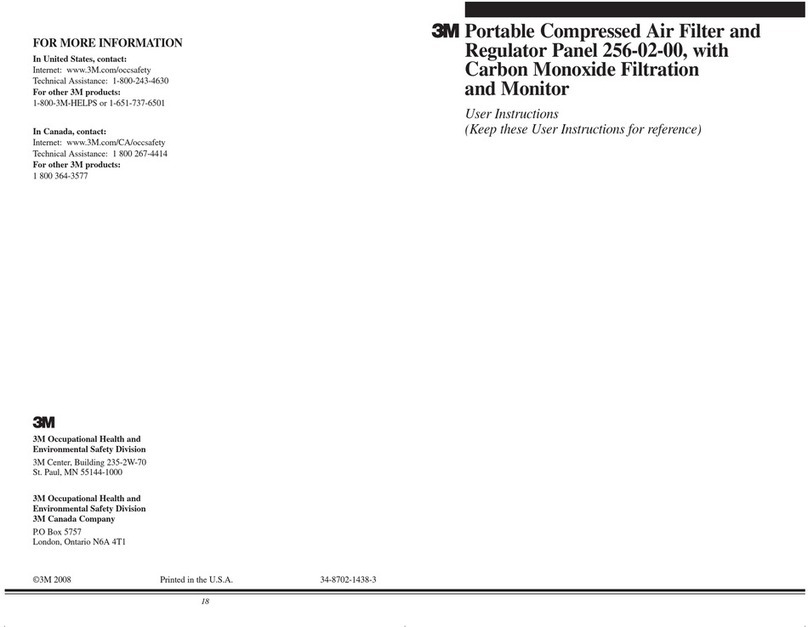
3M
3M 256-02-00 User instructions
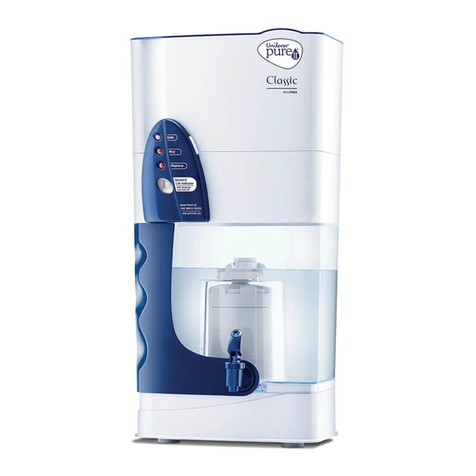
Unilever
Unilever Pure it Classic instruction manual
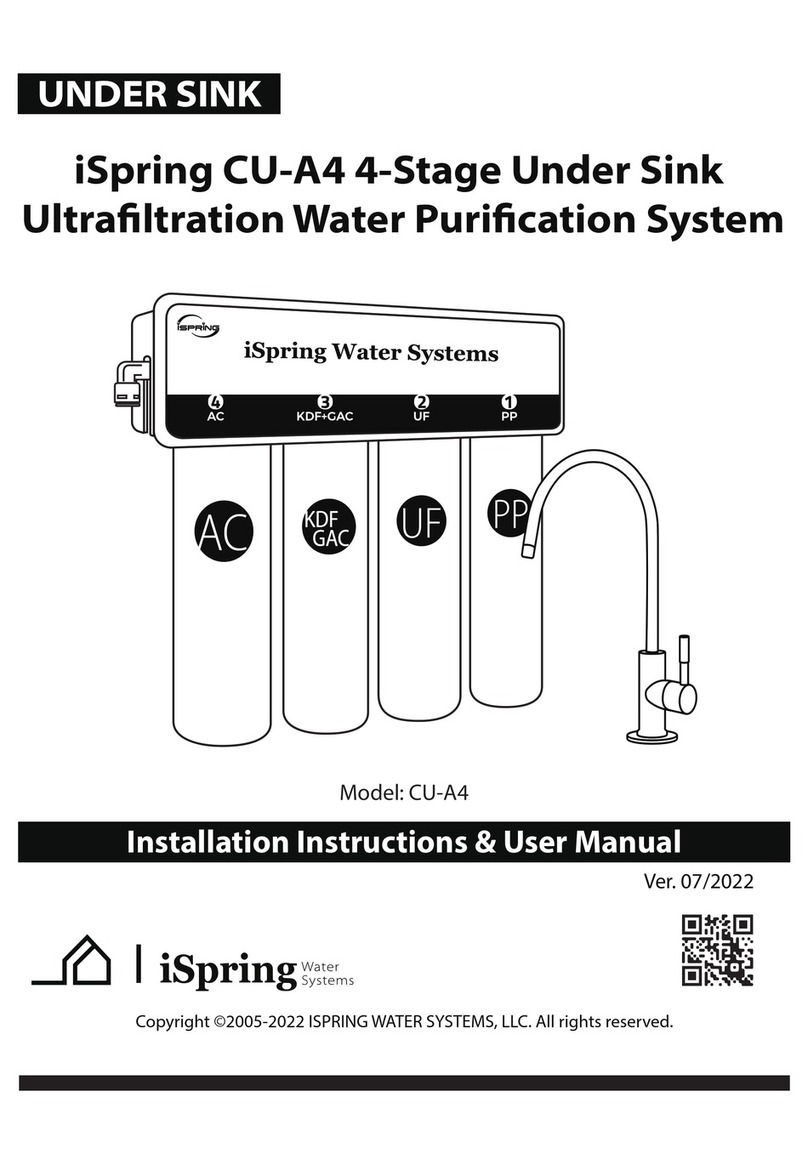
Ispring
Ispring CU-A4 Installation instructions & user manual
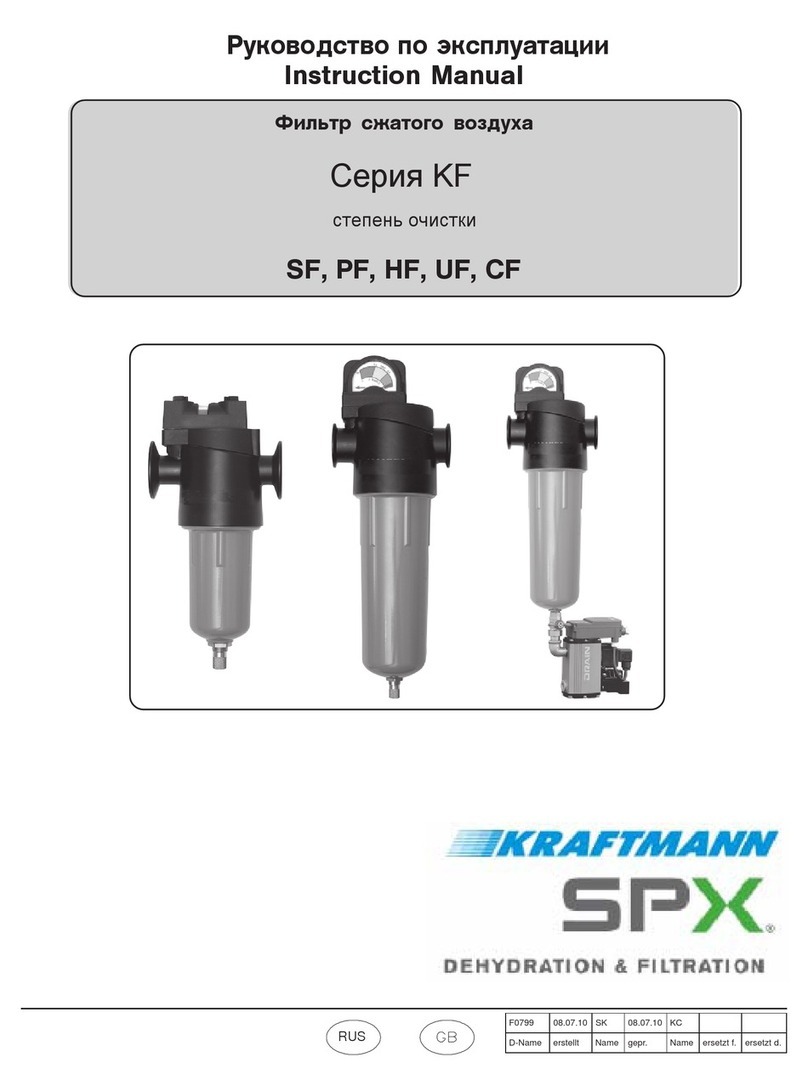
Kraftmann
Kraftmann SPX KF Series instruction manual
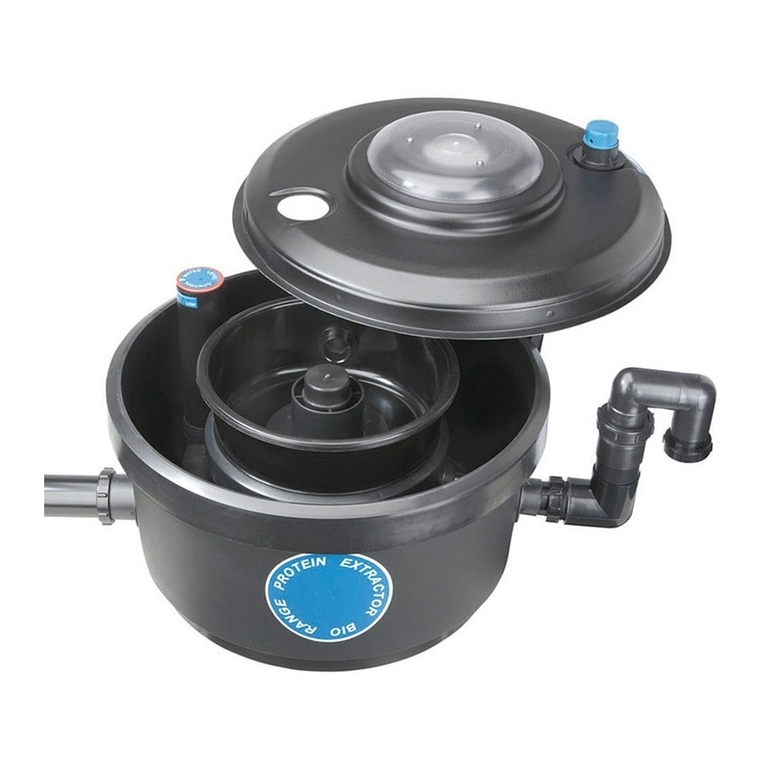
Fiap
Fiap Turbo Active manual
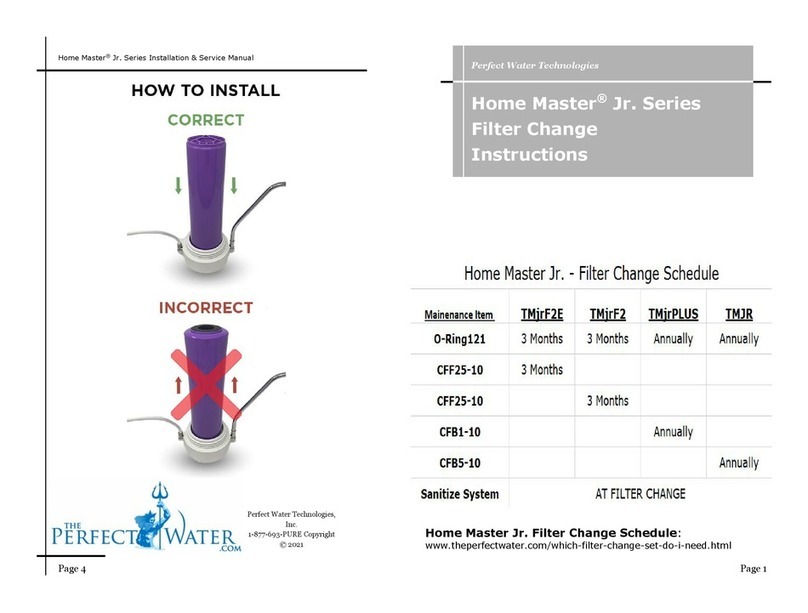
Perfect Water Technologies
Perfect Water Technologies Home Master Jr. Series instructions
